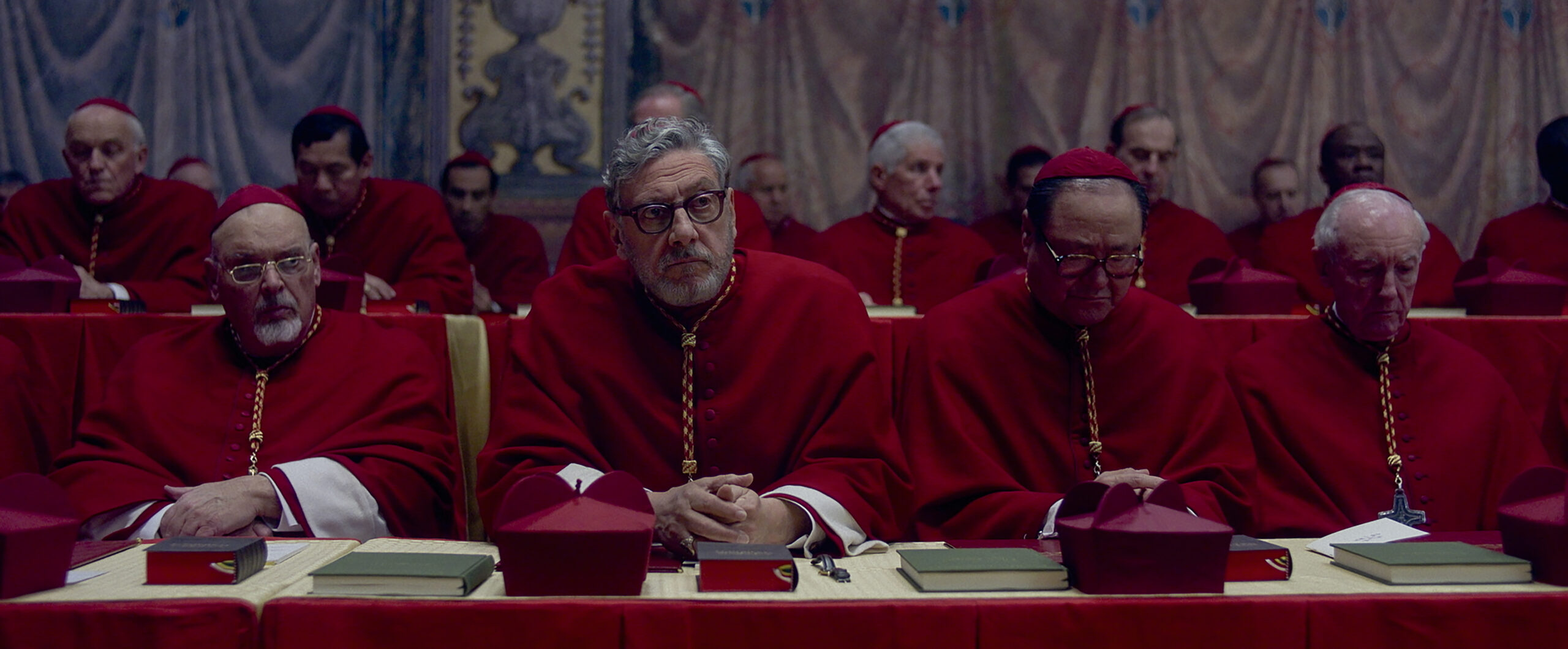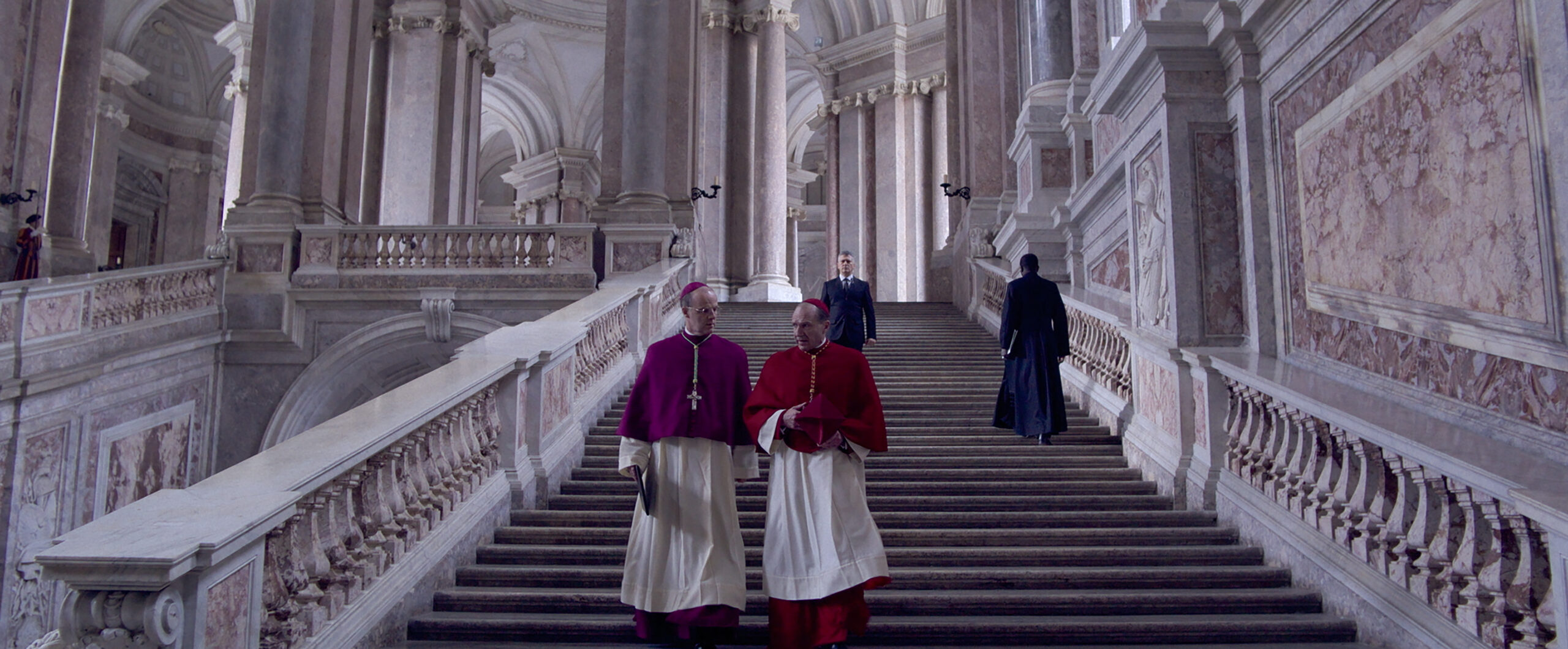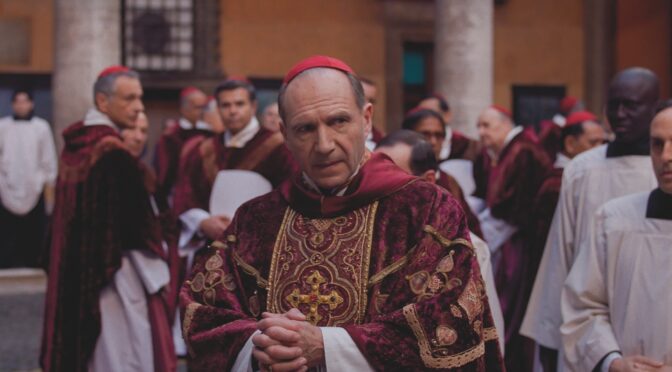 The intricacy and intrigue of the Catholic Church as an institution and its history and artwork make it an appealing subject for cinema, even for the irreligious and those of other faiths. CONCLAVE mines that intrigue and marries it with both a captivating ensemble cast and a demystified aesthetic to create a thriller that also presents a sharp snapshot of contemporary society.
The intricacy and intrigue of the Catholic Church as an institution and its history and artwork make it an appealing subject for cinema, even for the irreligious and those of other faiths. CONCLAVE mines that intrigue and marries it with both a captivating ensemble cast and a demystified aesthetic to create a thriller that also presents a sharp snapshot of contemporary society.
The death of the Pope prompts the Dean of the College of Cardinals, Thomas Lawrence (Ralph Fiennes), to convene a conclave to select the new leader of the Catholic Church and Holy See. The primary candidates are Cardinal Tremblay, the last to speak with the Pope before his death; Cardinal Tedesco, the conservative – and bigoted – Cardinal of Venice; and Lawrence’s close ally and confidant of the seemingly progressive late Pope, Aldo Bellini (Stanely Tucci). Other characters emerge throughout the film, including the unexpected Cardinal of Kabul, elevated in pectore, Benitez (Carlos Diehz), and additional details of each figure vying for the papacy.
From the outset, director Edward Berger creates an oppressive atmosphere, with a set and production design that is at odds with the typical presentation of the Church on screen. Instead of luxuriating in the architecture of the Sistine Chapel or the gaze of magnificent artwork of devotion, we spend much of our time in the college’s apartments. The lines are clean and sanitised, and the lighting is harsh. Modernity intrudes on the actions of these berobed avatars of a millennia-old institution: Cardinal Tedesco sucks on a bright red vape pen; a broken photocopier confounds Lawrence; another Cardinal scrolls his smartphone; Tremblay makes himself an espresso from a pod machine. The College of Cardinals is presented throughout as a symbol of an enduring institution, but one which is inextricably affected by – and effective upon – the modern world it inhabits.

“The College of Cardinals is presented throughout as a symbol of an enduring institution, but one which is inextricably affected by – and effective upon – the modern world it inhabits.”
Where this ecclesiastical intrigue starts to have wider resonance is in the clash between personalities, with a struggle between the supposedly traditionalist wing represented by Tedesco, the progressive legacy of the deceased Pope, taken up by Bellini, and middle ground by Tremblay (as well as other conflicting facets of the church represented, for example, by Nigerian Cardinal Adeyemi). “The centre can hold,” says one character, and much of the character interaction following this statement examines whether this is, in fact, true. Traditionalism is valued, but specific avatars out themselves as reactionary, racist, and with outlooks which resemble fascism. Tedesco decried the “weakness” displayed in pandering to other groups and those outside the confines of the conclave.
Throughout the film, there are hints of unrest outside, which continually intrudes inside the walls of the Vatican. However, Lawrence also actively pursues information beyond those mere hints and information about the cloistered Cardinals that would affect the outcome of the conclave. CONCLAVE seems to comment that no matter how much institutions stick their heads in the sand about their broader impact and things they struggle to comprehend, they must wrestle with them nevertheless, even if they find themselves mired in corruption and selfish thinking.

“CONCLAVE seems to comment that no matter how much institutions stick their heads in the sand about their broader impact and things they struggle to comprehend, they must wrestle with them nevertheless, even if they find themselves mired in corruption and selfish thinking.”
Various characters allude to crises of faith, with Bellini intoning at one stage that one individual’s crisis was “never about God; what he had lost faith in was the Church”. Similarly, the contemporary environment into which CONCLAVE and its source material have emerged (the novel was published in 2016) is one where there is a lack of faith, not in the spirit of humanity, but in the institutions of mankind to address the issues it faces whilst being mindful of all its members.
Some of the twists and turns CONCLAVE takes, especially as the film concludes, may seem absurd and soap-operatic. Still, the heightened nature is entirely in keeping with the manufactured hothouse of the conclave itself and the amped-up musical score. As austere as these figures may outwardly appear, tempers will fray, emotions will heighten, secrets will be unveiled, plots will be unravelled, and agendas will be laid bare.
The film’s various visual contrasts of tradition versus modernity and situational contrast of insularity versus outside influence means it can push these themes forward without pontificating. They are footnotes to an extremely effective surface-level drama, anchored by some elders of the acting church delivering superbly engaging performances. Contrary to what one might expect given the primary focus, these aren’t purely male, either: a supporting role as a nun from Isabella Rossellini is particularly memorable for its unexpected deployment of beautiful comic timing.
CONCLAVE is an intelligently constructed film, where embellishments to its surface-level thriller mystery allow for its transubstantiation into an altar for broader themes.

